
Max Reinhardt was an Austrian-born theatre and film director, intendant, and theatrical producer. With his radically innovative and avante garde stage productions, Reinhardt is regarded as one of the most prominent stage directors of the early 20th century.

The Palace of the Republic was a building in Berlin that hosted the Volkskammer, the parliament of East Germany, from 1976 to 1990.
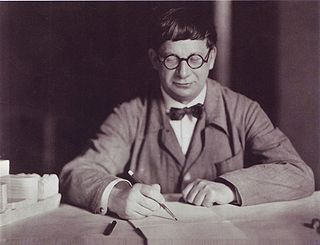
Hans Poelzig was a German architect, painter and set designer.

The Deutsches Theater is a theater in Berlin, Germany. It was built in 1850 as Friedrich-Wilhelm-Städtisches Theater, after Frederick William IV of Prussia. Located on Schumann Street (Schumannstraße), the Deutsches Theater consists of two adjoining stages that share a common, classical facade. The main stage was built in 1850, originally for operettas.

The Großes Schauspielhaus was a theatre in Berlin, Germany, often described as an example of expressionist architecture, designed by Hans Poelzig for theatre impresario Max Reinhardt. The structure was originally a market built by architect Friedrich Hitzig, and it retained its external, gabled form. It then became the Zirkus Schumann, a circus arena. It was renovated by Poelzig and reopened in 1919, contained seating for 3500 people. Max Reinhardt wanted to attract a working-class audience. The large size allowed for people who could pay top prices for the best seats to support low-cost seats, in the back of the theater.

Friedrichstadt was an independent suburb of Berlin, and is now a historical neighbourhood of the city itself. The neighbourhood is named after the Prussian king Frederick I.
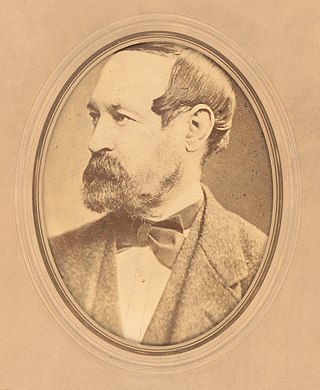
Georg Friedrich Heinrich Hitzig was a German architect, born into the Jewish Itzig family, converted to Lutheranism. He was a student of Karl Friedrich Schinkel.
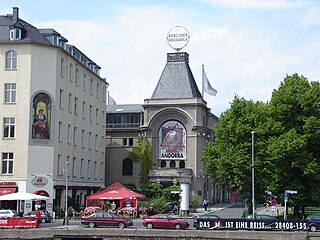
The Theater am Schiffbauerdamm is a theatre building at the Schiffbauerdamm riverside in the Mitte district of Berlin, Germany, opened on 19 November 1892. Since 1954, it has been home to the Berliner Ensemble theatre company, founded in 1949 by Helene Weigel and Bertolt Brecht.

Jedermann. Das Spiel vom Sterben des reichen Mannes is a play by the Austrian playwright Hugo von Hofmannsthal. It is based on several medieval mystery plays, including the late 15th-century English morality play Everyman. It was first performed on 1 December 1911 in Berlin, directed by Max Reinhardt at the Circus Schumann. Since 1920, it has been performed regularly at the Salzburg Festival.
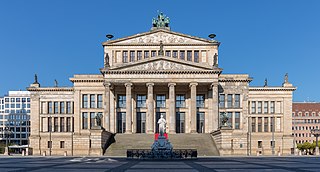
The Konzerthaus Berlin is a concert hall in Berlin, the home of the Konzerthausorchester Berlin. Situated on the Gendarmenmarkt square in the central Mitte district of the city, it was originally built as a theater. It initially operated from 1818 to 1821 under the name of the Schauspielhaus Berlin, then as the Theater am Gendarmenmarkt and Komödie. It became a concert hall after the Second World War, and its name changed to its present one in 1994.
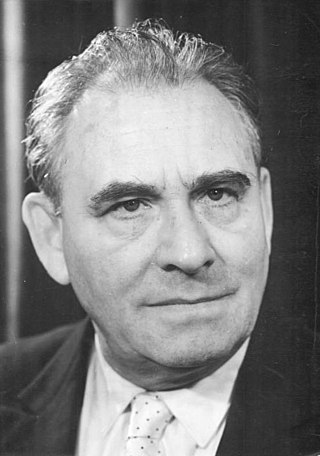
David Hirsch, known as Wolfgang Heinz, was an Austrian and East German actor and theater director. He served as President of the Academy of the Arts in Berlin between 1968 and 1974.
Erich Karl Löwenberg, known as Erik Charell, was a German theatre and film director, dancer and actor. He is best known as the creator of musical revues and operettas, such as The White Horse Inn and The Congress Dances.
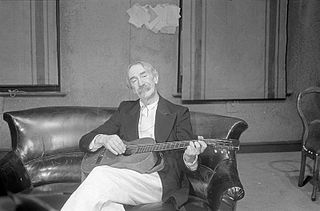
Max Walter Gülstorff was a German actor and stage director.

Mitte is a central section of Berlin, Germany, in the eponymous borough of Mitte. Until 2001, it was itself an autonomous district.

The Lessing Theater was a theatre in the Mitte district of Berlin, Germany. It opened in 1888 and was destroyed in April 1945 in a bombing raid; its ruins were demolished after World War II.

Circus Renz was a German circus company. It was established in 1842 in Berlin by Ernst Jakob Renz (1815–1892) as Circus Olympic and existed until 1897. The company had several stationary buildings in Berlin, Hamburg, Bremen, Breslau and Vienna.
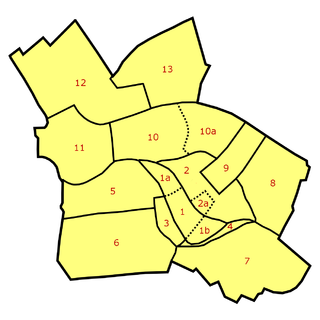
Spandauer Vorstadt is a historic district in what is now the Mitte district of Berlin.
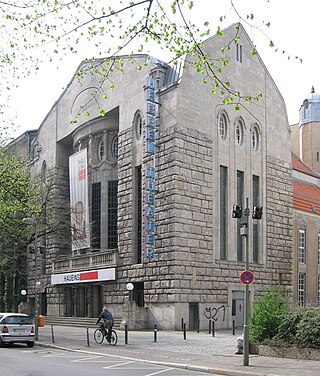
The Hebbel-Theater is a historic theatre building for plays in Berlin-Kreuzberg, Germany. It has been a venue of the company Hebbel am Ufer (HAU) from 2003.

The Hans Otto Theatre, named after the actor Hans Otto, is a municipal theatre in Potsdam in Germany. Its headquarters and main venue is in the Großes Haus am Tiefen See in Potsdam's cultural district on Schiffbauergasse. Other regular venues are the neighbouring historic Reithalle and occasionally the Palace Theatre in the Neues Palais.

























